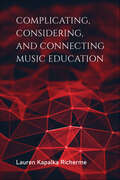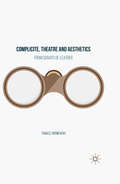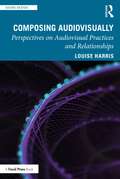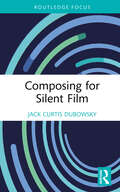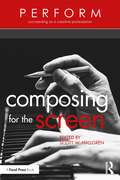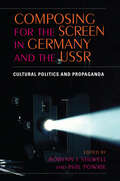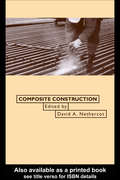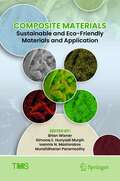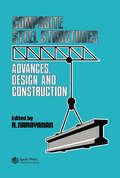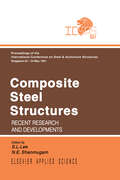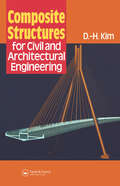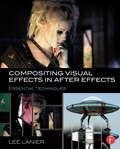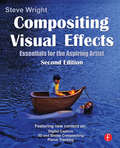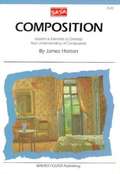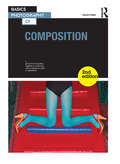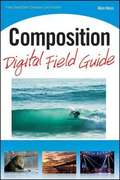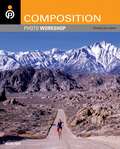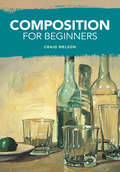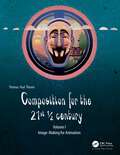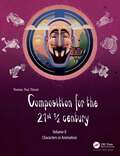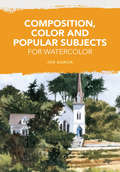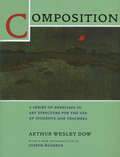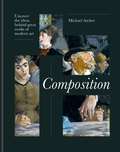- Table View
- List View
Complicating, Considering, and Connecting Music Education (Counterpoints: Music and Education)
by Lauren Kapalka RichermeIn Complicating, Considering, and Connecting Music Education, Lauren Kapalka Richerme proposes a poststructuralist-inspired philosophy of music education. Complicating current conceptions of self, other, and place, Richerme emphasizes the embodied, emotional, and social aspects of humanity. She also examines intersections between local and global music making. Next, Richerme explores the ethical implications of considering multiple viewpoints and imagining who music makers might become. Ultimately, she offers that music education is good for facilitating differing connections with one's self and multiple environments. Throughout the text, she also integrates the writings of Gilles Deleuze and Félix Guattari with narrative philosophy and personal narratives. By highlighting the processes of complicating, considering, and connecting, Richerme challenges the standardization and career-centric rationales that ground contemporary music education policy and practice to better welcome diversity.
Complicite, Theatre and Aesthetics: From Scraps of Leather
by Tomasz WiśniewskiThis book presents a pioneering critical study of Complicite's work throughout the years. Drawing on an extensive overview of the available research material - including interviews, manuscripts and the company's own archive - the book is framed within a clearly defined research perspective and explores the singularity of theatre communication. The book results from an encounter between the London-based - but cosmopolitan in scope - company, and a fresh application of the form-oriented scholarship of Eastern Europe, Yuri Lotman's semiosphere in particular. Focused on the aesthetics of Complicite, this study achieves a critical distance and undertakes multidimensional scrutiny of the available research material. By identifying the principles of Complicite's aesthetics, the book attempts to grasp the company's artistic paradigm. It focuses on ways of creating, preserving, and decoding meanings, rather than on the nuances of performance or contextual issues.
Composing Audiovisually: Perspectives on audiovisual practices and relationships (Sound Design)
by Louise HarrisWhat does the Coen Brothers’ Barton Fink have in common with Norman McLaren’s Synchromy? Or with audiovisual sculpture? Or contemporary music video? Composing Audiovisually interrogates how the relationship between the audiovisual media in these works, and our interaction with them, might allow us to develop mechanisms for talking about and understanding our experience of audiovisual media across a broad range of modes. Presenting close readings of audiovisual artefacts, conversations with artists, consideration of contemporary pedagogy and a detailed conceptual and theoretical framework that considers the nature of contemporary audiovisual experience, this book attempts to address gaps in our discourse on audiovisual modes, and offer possible starting points for future, genuinely transdisciplinary thinking in the field.
Composing for Silent Film
by Jack Curtis DubowskyComposing for Silent Film offers insight, information, and techniques for contemporary composition, arrangement, and live score performance for period silent film. A specialized music composition guide, this book complements existing film scoring and contemporary music composition texts. This book helps today’s composers better understand and correctly interpret period silent film, and to create and perform live scores that align with films’ original intentions, so that audiences notice and grasp fine points of the original film. Composing for Silent Film analyzes period silent film and its conventions – from Delsarte acting gestures to period fascinations and subtexts. As a practical composition text, it weighs varying approaches, including improvisation, through-scoring, "mickey-mousing," handling dialogue, and dividing roles amongst players. It steers composers towards informed understanding of silent film, and encourages them to deploy contemporary styles and techniques in exciting ways.For clarity and concision, examples are limited to nine canonical silents: Metropolis, Dr. Jekyll and Mr. Hyde, The Mark of Zorro, Sunrise: A Song of Two Humans, The Black Pirate, Nosferatu, The Phantom Carriage, Daisy Doodad’s Dial, and The Golem.
Composing for the Screen (PERFORM)
by Scott W. HallgrenThis book is a collection of essays written by and interviews with working composers for film and television, and video games, exploring the business side of composing, addressing the lack of understanding about career development and business responsibilities as they relate to composers. Over 30 industry professionals, composers, directors, educators and business agents at all levels dispel myths about the industry and provide practical advice on topics such as how to break into the field; how to develop, nurture, and navigate business relationships; and how to do creative work under pressure. Readers will also learn about the entrepreneurial expectations in relation to marketing, strategies for contending with the emotional highs and lows of composing, and money management whilst pursuing a career in composing. Written for undergraduates and graduates studying composing, sound production, and filmmaking, as well as aspiring composers for film, TV, and games, this book provides readers with a wealth of first-hand information that will help them create their own opportunities and pursue a career in film and television.
Composing for the Screen in Germany and the USSR: Cultural Politics and Propaganda
by Phil Powrie Robynn J. StilwellDespite the long history of music in film, its serious academic study is still a relatively recent development and therefore comprises a limited body of work. The contributors to this book, drawn from both film studies and musicology, attempt to rectify this oversight by investigating film music from the vibrant, productive, politically charged period before World War II. They apply a variety of methodologies--including archival work, close readings, political histories, and style comparison--to this under explored field.
Composite Construction
by David A. NethercotThe use of modern composite materials in construction offers the structural engineer and designer exciting opportunities for all types of buildings and structures. By far the most commonly used and longest established composite material is the combined use of steel and concrete in the form known in most parts of the world as 'composite construction
Composite Materials: Sustainable and Eco-Friendly Materials and Application (The Minerals, Metals & Materials Series)
by Simona E. Hunyadi Murph Brian Wisner Ioannis N. Mastorakos Muralidharan ParamsothyThis collection covers innovations in the field of composite materials with a specific focus on eco-friendly and environmentally sustainable systems. All composite fields are explored, including polymer, metal, and ceramic matrix composites with an emphasis on sourcing raw materials in a sustainable way as well as the development of composite materials for environmental sustainability. Topics will include the development of new materials for structural applications, reduction in energy consumption, and increased component life along with discussions of novel methods to reuse existing materials. Additional topics include, but are not limited to:· Naturally Sourced Materials feedstock · Recycled Material feedstock, · Application of composite for reduced carbon footprint · Development of novel materials to repurpose waste from other areas
Composite Steel Structures: Advances, design and construction
by R. NarayananThe constant need for cost-effective structural forms has led to the increasing use of composite construction, and a substantial amount of research effort is currently being spent in developing techniques for combining concrete and steel effectively. Significant economies in this form of construction have been observed, especially in bridges and building floors. Codes of Practice on composite construction are being revised in the UK and in Europe, in the light of the substantial amount of knowledge that has been generated in recent years. An International Conference organised by the Department of Civil and Structural Engineering, University College, Cardiff, UK, with the specific objective of discussing all types of metal structures in an integrated way, provided a forum for the dissemination of new concepts and for reviewing developments; the expectations of the organisers have been amply justified and exceeded by the level of international response to the call for papers. This volume contains 17 papers on composite steel structures, presented at the Conference, many of which were by well-known experts in their respective fields.
Composite Steel Structures: Recent research and developments
by S L Lee N E ShanmugamProceedings of the International Conference on Steel and Aluminium Strucutres, ICSAS 91, Singapore 22-24 May 1991. The complete proceedings are available in three volumes: steel structures, aluminium structures and composite steel structures.The conference was organised by the Department of Civil Engineering, National University of Singapore sequel to the one held in Cardiff, UK in July 1987. It was co-sponsored by the International Association for Bridge and Structural Engineering, the Institution of Civil Engineers, the Institution of Engineers, Singapore, the Institution of Structural Engineers, the Steel Construction Institute, UK, the Singapore Structural Steel Society and the University of Wales College of Cardiff. The conference provided a forum to discuss recent advances and trends in the analysis, design and construction of all types of metal structures.This volume contains 18 of the papers presented at the conference. Invited Lectures on the state-of-the-art surveys have been provided by well-known experts in their respective fields. The coverage is extensive and topics include Bridges, Building Floor Systems, Concrete Filled Hollow Sections, Aluminium-concrete Systems, Composite Members to Earthquake Loading, etc.
Composite Structures for Civil and Architectural Engineering (Structural Engineering: Mechanics and Design)
by D-H KimA thorough and understandable guide to the properties and design of structural composites. It derives from the author's many years of experience of research, industrial development and teaching.
Compositing Visual Effects in After Effects: Essential Techniques
by Lee LanierCreate vibrant visual effects with Adobe After Effects. Gain the tips, tricks, and applied knowledge you need to carry out essential visual effects tasks and bring your digital compositing to the next level. In Compositing Visual Effects in After Effects, industry veteran Lee Lanier covers all the common After Effects techniques any serious visual effects artist needs to know, combining the latest, professionally-vetted studio practices and workflows with multi-chapter projects and hands-on lessons. Engaging, full-color tutorials cover: Altering resolutions and frame rates Channel and color space manipulation Rotoscoping and masking Matchmoving and motion tracking Keying green screen Working in the 3D environment and integrating 3D render passes Particle simulation Color grading and distressing Expressions and project management The companion website (www.focalpress.com/cw/lanier) features video image sequences, 3D renders, matte paintings, and other tutorial materials, allowing you to immediately apply the techniques taught in the book.
Compositing Visual Effects: Essentials for the Aspiring Artist (Focal Visual Effects And Animation Ser.)
by Steve WrightPut the essential concepts and techniques of digital compositing to work for you without the need of a single mathematical equation. Compositing Visual Effects is lavishly illustrated with hundreds of film shots, figures, illustrations, and diagrams to help the visual reader gain a valuable vocabulary and understanding of the full range of visual effects, in which digital compositing plays a key role. Beginning with an inspirational tour of the scope and magnitude of digital compositing, you get a solid overview of the kinds of digital effects routinely executed today. See how CGI is composited with live action, how set extensions are done, and what a match-move shot is. Following that you learn each of the key applications of digital compositing, which include bluescreen compositing, bullet-time shots, motion tracking, and rotoscoping. The subsequent chapters dig down into each of the major digital compositing applications, introducing the fundamental concepts, and processes behind them. Learn what is easy and hard, possible and impossible, and what to expect when working on a job that entails digital compositing. New to this edition are 4 new chapters on:* 3D compositing, with lessons on what camera tracking is, how it is used to put CGI into a live-action plate, as well as live action into a 3D scene. * Stereo compositing, with descriptions of key stereoscopic terms and concepts, lessons on compositing shots that were filmed in stereo (both bluescreen and CGI), as well as the stereo conversion process when a flat 2D movie is converted to a stereo 3D movie* RED and Digital Capture with Log Images, including log image formats. This is a very hot topic these days. Colleges hang around video because it is cheaper. Film is still big in the real world of production.* Tracking an entire project from start to finishThis is in addition to robust updates on topics such as:* planar tracking, Z compositing, working with Anamorphic HD formats, mocap, and more This edition also includes a companion website with images from the book for you to work with in your own compositing exercises. An accessible introduction to a complex subject for novice and aspiring compositors, from experienced author and compositing whose compositing credits include Night at the Museum 2, Shutter Island, Solaris, Traffic, and more Full color presentation illustrating the art and techniques of the practice, provides inspiration along with instruction New to this edition is a companion website, new chapters on 3D compositing, stereo compositing, RED and digital capture with log images, and more will have you understanding the latest in compositing technology in no time
Composition
by James HortonAll good paintings are composed, whether consciously or unconsciously. If you are working direct from a landscape subject, you can only compose with what you see before you, but for studio paintings you have more leeway because you can arrange the subject as you choose. In the first part of this book the author has dealt with what might be termed "rearranging nature," while in the second he has provided some ideas on composing portraits, still life and floral groups by planning the initial set-up as well as the painting itself. He has also explained some of the more formal rules of composition based on geometry -- most artists are aware of these, and you may find them interesting even if you do not see an immediate application to your own work.
Composition (Basics Photography)
by David PrakelStrong images only come about through a combination of technical excellence and thorough composition. While there is plenty of technical advice, photographers often turn to fine-art sources for the so-called 'rules of composition'. This book, however, acknowledges photography's quite different dynamic and offers a contemporary approach to composition more suited to the medium. The second edition of Basics Photography 01: Composition offers a contemporary approach to composition. Its six core chapters cover historical background and personal motivation, formal elements, space and time within the photographic frame and composition in real-world situations. The Basics Photography series, originally published by AVA Publishing, comprises a collection of titles including: Lighting, Composition, Capturing Colour, Post-Production Black & White, Post-Production Colour, Working in Black & White and Exposure. Easily accessible and highly readable, the books clearly explain and explore fundamental photographic concepts; they are fully indexed and illustrated with clear diagrams and inspiring imagery, building to provide an essential introduction to the subject.
Composition Digital Field Guide
by Alan HessThe go-with-you guide for creating strong compositions every time you take a photo Composition requires purposeful placement of elements within the frame, including backgrounds, foregrounds, main subjects, and much more. It can take years to acquire strong compositional skills. That's where Composition Digital Field Guide comes in. Packed with full-color photos, this handy guide teaches you how to bring together photographic elements to produce photos that are unique, creative, and memorable. Addresses the skills required to master the art of good composition when taking digital photos Walks you through framing your images carefully, which is the first key step in capturing a strong photograph Features hundreds of stunning and inspiring full-color photos of people, wildlife, and landscapes Includes the newest feature of the Digital Field Guide series: a removable color checker card to help ensure true color in your photographs It will be difficult to keep your composition while reading the invaluable advice in Composition Digital Field Guide!
Composition Photo Workshop
by Blue FierThe hands-on instruction that digital photographers need to compose great shots Introducing readers to the basic elements of design, this full-color guide shows photographers step by step how to frame great compositions before they take the shot. Instructions, advice, examples, and assignments cover all types of photography.
Composition for Beginners
by Craig NelsonArtist Craig Nelson covers all the basics of composition. From perspective to proportion, you will discover the keys to unlocking the secrets needed to improve your skills and create outstanding works of art.
Composition for the 21st ½ century, Vol 1: Image-making for Animation
by Thomas Paul ThesenComposition for the 21st ½ century: Image-Making for Animation focuses on composition and its technical and artistic application in animation, illustration, games, and films. It covers all aspects of design and discusses in detail their artistic applicability and impact on image and narrative. Emphasis is placed on the ability of each aspect to support and affect the narrative. Additional case studies explain the successful use of these concepts in films and animation. This book is geared toward students; however, it is also reader-friendly for professionals. Composition for the 21st ½ century: Image-Making for Animation’s goal is to comprehend composition as an artistic tool and as a significant part of the professional image-making process. Key Features: Teaches the complexity of composition in image-making. Closes the gap between praxis and theory in animation. Explains how to produce images that support the narrative in their visuals. Discusses the need for artistic reasoning in image-making. Presents case studies that assist the reader in understanding the process as they progress through this book. Author Bio: For more than twenty years, Thomas Paul Thesen’s career has been about learning and understanding the complexities of art, animation, and image-making, both in still illustration, drawing, and photography, and in the moving image. He has worked in the industry as a character animator and visual development artist for companies such as Pixar, DreamWorks, and Sprite Animation Studios. He has also taught for many years at universities across Asia, the USA, and the UK.
Composition for the 21st ½ century, Vol 2: Characters in Animation
by Thomas Paul ThesenComposition for the 21st ½ century: Characters in Animation focuses on characters and their application in animation, illustration, games, and films. It covers various technical aspects of character design and their artistic applicability. This book analyzes in detail the purpose of these character design features and provides examples of their impact. Emphasis is placed on each aspect and how it affects and is affected by the narrative. Additionally, complex case studies that assist in explaining the successful use of these concepts in films and animation are included. This book is geared toward students; however, it is also reader-friendly for professionals. Composition for the 21st ½ century: Characters in Animation’s goal is to comprehend composition as an artistic tool and as a significant part of the professional character design process. Key Features: Teaches the complexity of composition in the professional character design process. Closes the gap between praxis and theory in character design. Explains how to produce believable characters that express their narrative in the visuals. Discusses the need for artistic reasoning in character design. Presents case studies to assist readers in understanding the process as they progress through this book. Author Bio: For more than twenty years, Thomas Paul Thesen’s career has been about learning and understanding the complexities of art, animation, and image-making, both in still illustration, drawing, and photography and in the moving image. He has worked in the industry as a character animator and visual development artist for companies such as Pixar, DreamWorks, and Sprite Animation Studios. He has also taught for many years at universities across Asia, the USA, and the UK.
Composition, Color and Popular Subjects for Watercolor
by Joe GarciaLearn great lessons about how you can incorporate great design elements into your composition, including five easy formulas that will ensure a strong image every single time. But don't let your great design be ruined by muddy colors! These lessons go beyond color wheel instruction to teach how to achieve tones from skin color to sky and foliage, all of which sets up the final section, where you'll learn great approaches to popular subjects ranging from animals and nature to man-made objects.
Composition: A Series of Exercises in Art Structure for the Use of Students and Teachers
by Arthur Wesley DowFirst published in 1899, Arthur Wesley Dow's Composition has probably influenced more Americans than any other text to think of visual form and composition in relation to artistic modernity. While Dow is known as the mentor of Georgia O'Keeffe and Max Weber, his legacy as a proponent of modern art has suffered undeserved neglect by recent artists and art historians.In Composition Dow develops a system for teaching students to create freely constructed images on the basis of harmonic relations between lines, colors, and dark and light patterns. Greatly influenced by Japanese art, he expounds a theory of "flat" formal equilibrium as an essential component of telling pictorial creation. Generations of teachers and their public school pupils learned from Dow's orientalism and adopted basic postimpressionist principles without even knowing the term. The reappearance of Dow's practical, well-illustrated guide, enhanced by Joseph Masheck's discussion of its historical ramifications, is an important event for all concerned with the visual arts and the intellectual antecedents of American modernism.
Composition: The Anatomy of Picture Making
by Harry SternbergDifficult to grasp and harder still to achieve, composition is a chief concern of artists at every level. This clear and focused introduction exposes the compositional devices that underlie successful artworks. Its many examples reduce pictures to their basic formal elements, offering a concise treatment of an oft-neglected topic.Author Harry Sternberg, whose works appear in major museums throughout the United States, was a student and instructor at New York's prestigious Art Students League. He draws upon his extensive background as a teacher and professional to provide an approachable view of applying composition to graphic works. Novices and experienced artists alike will benefit from his well-illustrated explanations of handling such elements as the picture border, flat space, tensions, positive and negative space, geometric design, and volume, as well as the processes of analyzing pictures and communication through design.
Composition: Uncover the ideas behind great works of modern art
by Michael ArcherThe rules of composition have changed. Discover the new ideas that shape the art we make today. Art has changed beyond recognition since the principles of harmonious composition were established in classical times. From the invention of photography to the digital revolution, technological and social advances have transformed the way we see the world. This new vision, influenced by changing attitudes not least towards gender roles and the West's colonial history, is reflected in the art we make.From the rejection of Western compositional orthodoxy by artists such as Édouard Manet, Vincent van Gogh and Mary Cassatt to the revolutionary practices of Jean- Michel Basquiat, Tania Bruguera, Meleko Mokgosi and many others, acclaimed art critic and writer Michael Archer reveals the ideas and intentions behind a thrillingly diverse selection of artworks, giving readers a new set of tools for understanding art today.
Composition: Uncover the ideas behind great works of modern art
by Michael ArcherThe rules of composition have changed. Discover the new ideas that shape the art we make today. Art has changed beyond recognition since the principles of harmonious composition were established in classical times. From the invention of photography to the digital revolution, technological and social advances have transformed the way we see the world. This new vision, influenced by changing attitudes not least towards gender roles and the West's colonial history, is reflected in the art we make.From the rejection of Western compositional orthodoxy by artists such as Édouard Manet, Vincent van Gogh and Mary Cassatt to the revolutionary practices of Jean- Michel Basquiat, Tania Bruguera, Meleko Mokgosi and many others, acclaimed art critic and writer Michael Archer reveals the ideas and intentions behind a thrillingly diverse selection of artworks, giving readers a new set of tools for understanding art today.
